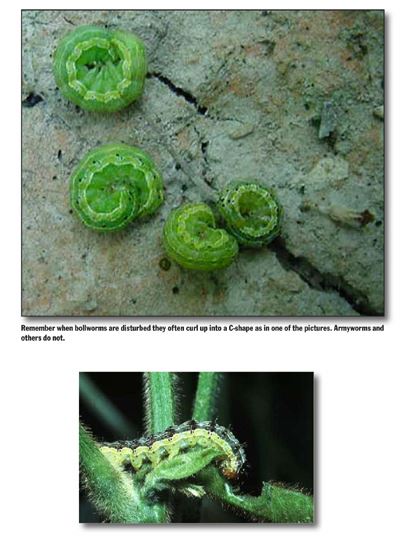Concern Mounts As Bollworms Move From Arkansas Corn To Soybeans
LITTLE ROCK, ARK.
Bollworms have reared their ugly heads in soybean fields across Arkansas. “As expected with the big increase in corn acreage this year, we’ve seen a big jump in activity with bollworms,” says Dr. Gus Lorenz, extension entomologist with the University of Arkansas Division of Agriculture.
Lorenz said bollworms are moving out of corn and munching their way through the blooms and pods of planted soybeans.
“We scouted several fields in the past two days running 15 to 20 worms per 25 sweeps,” he said.
He is concerned that some growers aren’t scouting and will miss the bollworms or decide not to treat because they’re squeezed by other input costs. This would be a mistake because bollworms are the most destructive of all soybean pests and can decimate a bean field in short order, he said.

Lorenz said he is seeing most of the worms feeding on the blooms and small pods.
Another concern, he said, is that many farmers are spraying but not using university- recommended threshold levels to decide when to spray.
“Our threshold for bollworms in soybeans is 15 per 25 sweeps or four per row-foot on standard row beans,” he said. “These thresholds are solidly based, and you should use them to base your decision on whether or not treatment is needed. Also, remember that four per row foot on 38-inch rows is equivalent to two per row foot on 19-inch rows and one per row foot on 9.5-inch rows.”
The entomologist said the price of soybeans has increased greatly and with multiple pest problems in their beans, many farmers are “prone to pull the trigger” as soon as they see the worms.
“I encourage you to stay close to this threshold,” he said. “If treatment is necessary, a pyrethroid will control the bollworms and the stink bugs.”
Growers in south Arkansas should be wary of loopers. While the looper numbers are low now, pyrethroid applications can kill off looper predators.
“Soybean loopers are resistant to pythreroids, but all the beneficial insects … that feed on them and keep them in check are not,” Lorenz said. “When you remove them from the system, it frees the looper to expand its population.”
The bottom line, Lorenz said, is to scout closely.
Scouts aren’t seeing the worms in fields with plants that are chest high and lapping the middles. “We are seeing them in late-planted fields that are blooming and not lapping the middles,” he said.
“Don’t just blanket treat,” he said. “Treat the fields at treatment levels and leave the other ones alone, or you’ll have the potential to flare other pests.
Consult the Division of Agriculture’s MP-144 “Insecticide Recommendations for Arkansas,” guide for rates and realize that bollworms are much easier to kill in soybeans than cotton because they can’t get away from the pesticide.
Use the higher end rates on high populations and bigger worms and the lower use rate on moderate populations with medium-sized worms, Lorenz advised.
“When sampling with a sweepnet, remember that bollworms are often far down in the canopy, and if you’re not sweeping deep into the canopy, you will easily underestimate populations,” he said. “Be observant and look for the worms down in the plant as you walk through the field.” Δ
Remember when bollworms are disturbed they often curl up into a C-shape as in one of the pictures. Armyworms and others do not.